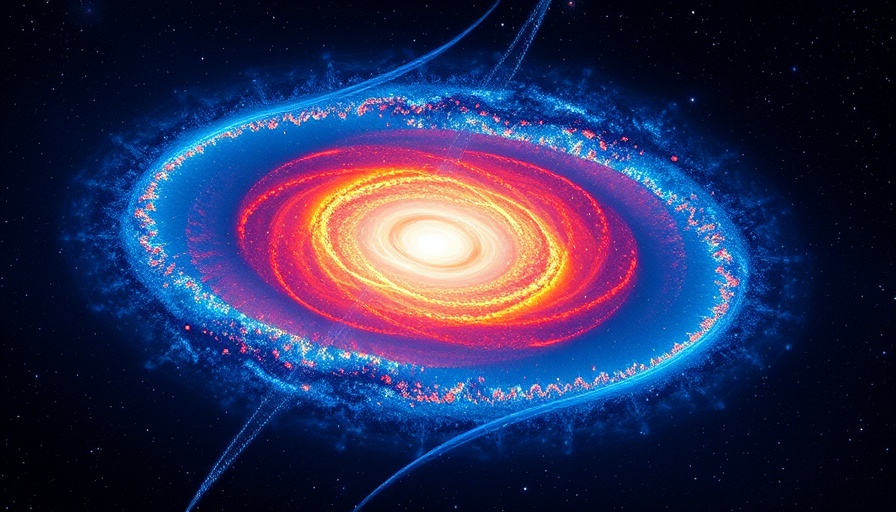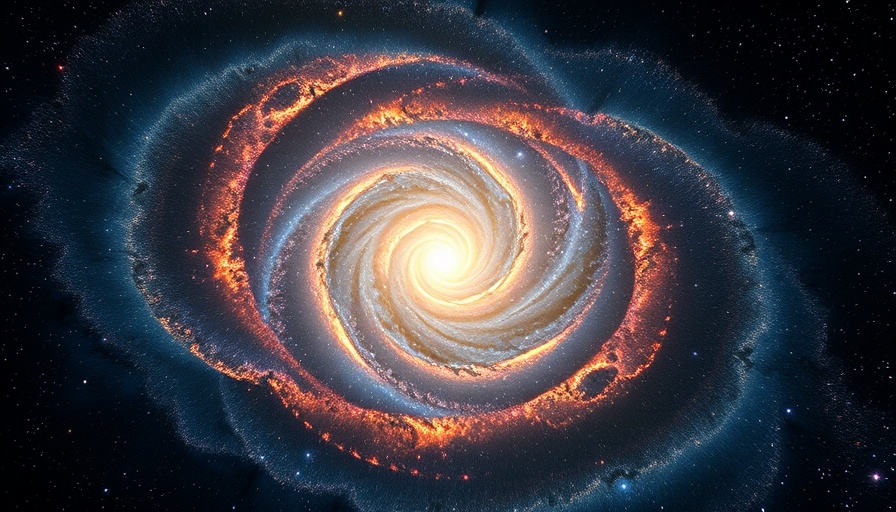
Exploring the Mysteries of NGC 4527: A Fascinating Spiral Galaxy
In July 2025, a team of Argentinian astronomers announced groundbreaking findings regarding the spiral galaxy NGC 4527. Located in the constellation Virgo, about 49 million light years from Earth, this edge-on galaxy has long intrigued scientists. With an impressive size of approximately 104,000 light years, it is classified as a starburst galaxy due to its high infrared luminosity and active star formation rate. However, recent observations hint at something more complex lurking at its center – an active galactic nucleus.
What Makes NGC 4527 Stand Out?
NGC 4527 was discovered in 1783, but it's only recently that astronomers have collected substantial data about its unique characteristics. While it boasts a significant star formation rate of about three solar masses per year, its star formation efficiency is unusually low compared to other well-known starburst galaxies, suggesting it may be in a "pre-starburst" phase, where gas accumulation foreshadows an explosive burst of star formation. This has raised intriguing questions about the processes at work in this galaxy.
Radio Observations Unveil New Insights
Utilizing the upgraded Giant Metrewave Radio Telescope (uGMRT), researchers, led by Camila Ailen Galante from the National University of La Plata, delved deeper into NGC 4527. Their findings pointed to substantial gas reservoirs in the nucleus, as well as kinematic signatures typical of gravitational instability. The radio emissions at 700 and 1,230 MHz were found to align closely with the galaxy's stellar disk, generating valuable data regarding the presence of polycyclic aromatic hydrocarbons.
A Glimpse at the Active Galactic Nucleus
What stands out from the latest observations are the three compact radio sources identified in the galaxy's central region. One of these sources, located at the core of NGC 4527, exhibited a non-thermal spectral index, suggesting active processes. The presence of these compact sources could indicate the activity characteristic of an active galactic nucleus, a central engine that drives immense properties related to star formation and galaxy evolution.
Implications for Stellar Formation Understanding
The insights garnered from NGC 4527 will aid astronomers in understanding the evolutionary paths of galaxies. The apparent absence of a radio halo means that the star formation activity behaves differently from that observed in more traditional starburst galaxies like M82 and NGC 253. Such differences provide clues to the complex dynamical processes governing galaxy development.
What Lies Ahead for NGC 4527?
As researchers continue to explore NGC 4527, the excitement surrounding its potential active nucleus will likely drive further inquiries. Will this galaxy transition from a pre-starburst state to an active one, and what does that mean for our broader understanding of galaxy dynamics? Upcoming studies employing advanced observational techniques may soon answer these questions, potentially reshaping our comprehension of how galaxies evolve in the vast cosmos.
Understanding the dynamics at play in NGC 4527 not only fosters a deeper appreciation of our universe but also connects to the broader exploration of space and the mysteries it holds. As new findings emerge, they will encourage astronomers and enthusiasts alike to look even deeper into the night sky.
 Add Row
Add Row  Add
Add 




 Add Row
Add Row  Add
Add 

Write A Comment